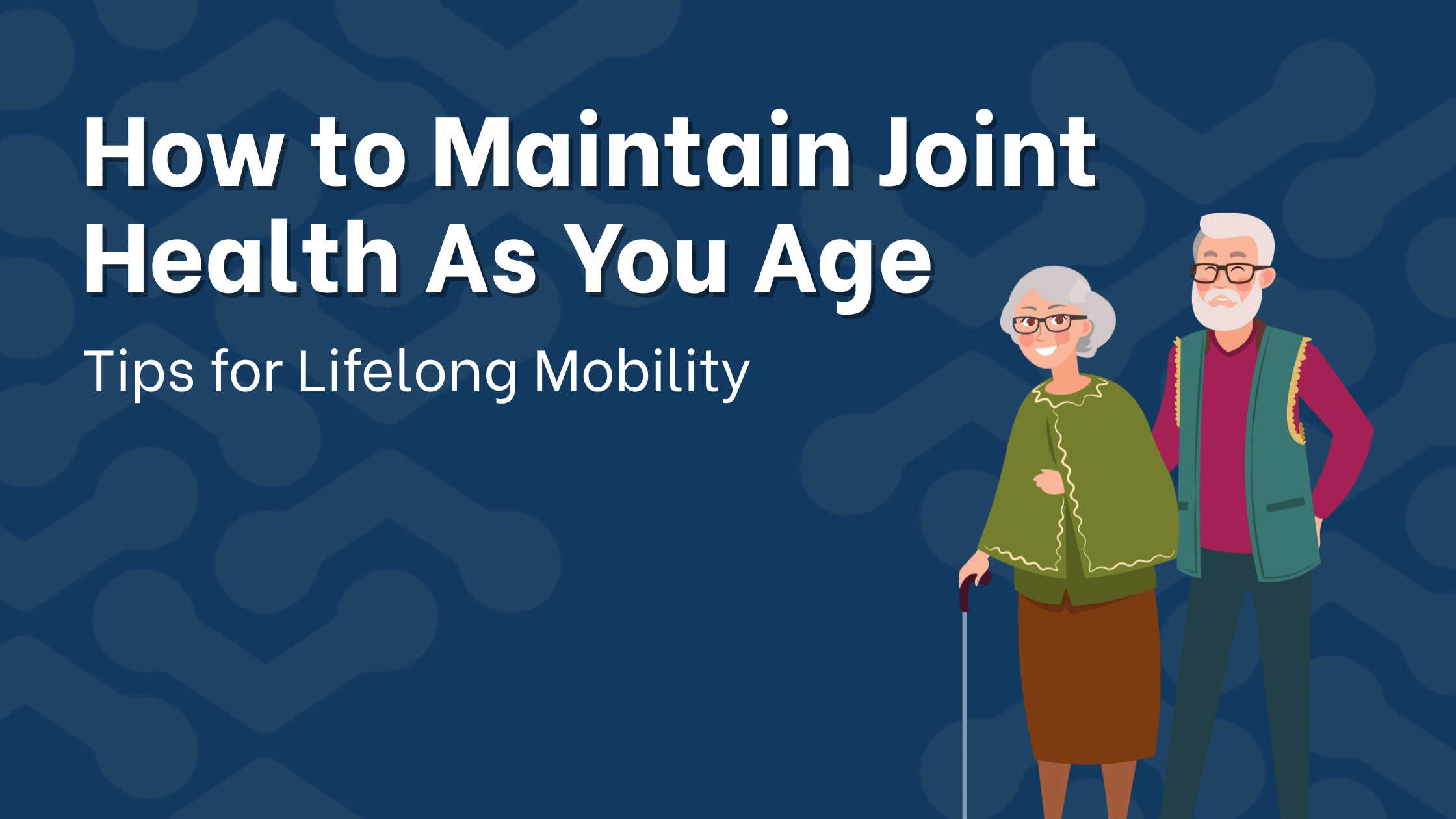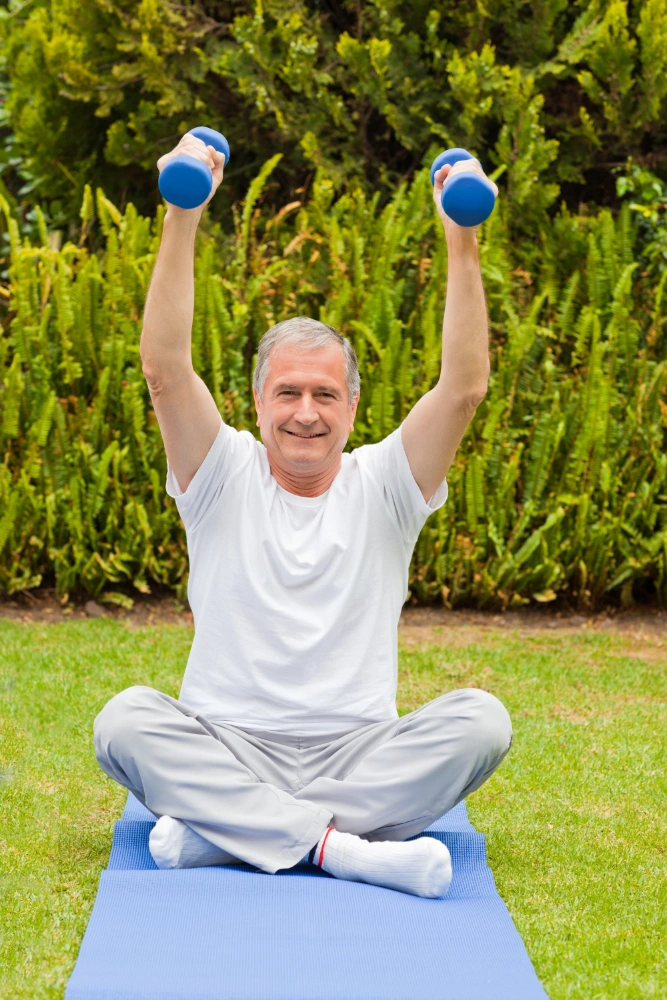How to Maintain Joint Health As You Age: Tips for Lifelong Mobility

As we grow older, our bodies go through several changes, and our joints often bear the brunt of aging. The wear and tear of daily movements, reduced bone density, and slower tissue repair can lead to stiffness, pain, and even conditions like arthritis. But aging doesn’t have to mean joint pain or limited mobility. With the right habits, you can keep your joints healthy, strong, and mobile for years to come.
Here are expert-backed ways to maintain joint health as you age—so you can stay active, independent, and pain-free.
1. Stay Physically Active – But Smartly
Regular exercise keeps your joints lubricated and strengthens the muscles that support them. As we age, staying active is crucial to prevent stiffness and weakness.
Best exercises for joint health:
- Low-impact activities like walking, cycling, and swimming
- Stretching exercises for flexibility
- Strength training to support bone and joint stability
- Yoga or Pilates to improve balance and joint alignment
Tip: Avoid high-impact sports that may stress the joints—especially knees and hips—as you get older.
2. Maintain a Healthy Weight
Excess weight is one of the biggest risk factors for joint problems, especially in the knees, hips, and lower back. Even a small reduction in weight can significantly lower the pressure on your joints.
- Every 1 kg of extra body weight adds about 4 kg of pressure on the knees.
- Shedding 5–10% of your body weight can greatly reduce joint strain and inflammation.
3. Eat for Your Joints
A balanced diet rich in joint-friendly nutrients helps reduce inflammation and supports cartilage health.
Nutrients that support joint health:
- Omega-3 fatty acids: Found in fish, flaxseeds, walnuts—help reduce joint inflammation.
- Calcium & Vitamin D: For bone strength. Found in dairy, leafy greens, eggs, and fortified foods.
- Vitamin C: Helps in collagen production. Citrus fruits, berries, and bell peppers are great sources.
- Antioxidants: Found in colorful vegetables and fruits—they protect joints from wear and tear.
Tip: Reduce intake of processed foods, sugar, and red meats which can increase inflammation.
4. Stay Hydrated
Cartilage—the cushioning tissue in joints—is made mostly of water. Dehydration can lead to reduced joint lubrication, increasing the risk of friction and pain.
- Aim for 8–10 glasses of water daily.
- Limit caffeinated and sugary drinks that may cause dehydration.

5. Protect Your Joints in Daily Life
Simple actions in your everyday routine can either protect or harm your joints. Be mindful of your movements.
Joint protection tips:
- Use supportive footwear
- Avoid slouching or staying in the same position for long periods
- Lift with your knees, not your back
- Use ergonomic tools if you work at a desk
6. Don’t Ignore Pain or Stiffness
Persistent joint pain, swelling, or stiffness should never be ignored. Early intervention can prevent conditions from worsening.
Conditions like osteoarthritis, rheumatoid arthritis, and tendonitis are manageable with the right medical care. Delaying diagnosis can lead to irreversible joint damage.
If you notice pain during movement or stiffness that lasts longer than 30 minutes in the morning, consult a specialist.
7. Consider Preventive Health Checkups
As you age, schedule regular orthopedic checkups—especially if you have a family history of joint issues, or previous injuries.
Advanced diagnostics and preventive screenings can catch joint degeneration early, allowing timely intervention. With experts like Dr. Abhishek Bhalotia, you can receive guidance tailored to your joint health, lifestyle, and risk factors.

8. Take Care After Injuries
Previous injuries increase the risk of future joint issues, especially in sports or accident-related trauma. Always follow up properly and complete rehabilitation.
Incomplete healing can lead to chronic instability, early arthritis, or joint deformities. With modern orthopedic care, including muscle-sparing surgical techniques and personalized physiotherapy, full recovery is possible—even in older adults.
Final Thoughts
Aging is inevitable—but joint pain doesn’t have to be. By incorporating these healthy habits into your lifestyle, you can enjoy flexible, pain-free movement well into your golden years. The key lies in early awareness, active prevention, and expert care when needed.
At United Super Specialty Hospital, Gondia, Dr. Abhishek Bhalotia offers state-of-the-art orthopedic care, from preventive guidance to advanced robotic joint replacements. Whether you’re facing early signs of joint pain or want to maintain lifelong joint health, expert help is just a step away.
Your joints support you every day—return the favor by taking care of them!


